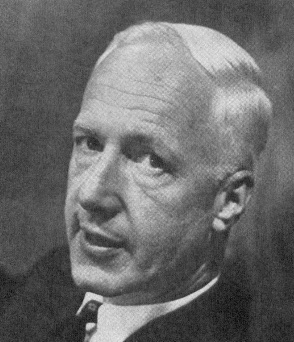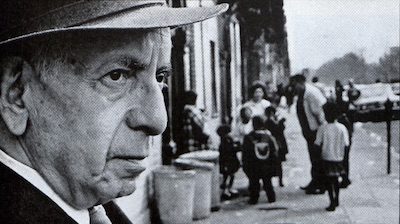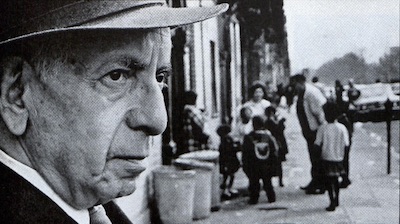American attitudes about how we deal with drug addicts seem to be shifting. According to polls from the Pew Research Center, 67 percent of Americans believe the government should focus more on treating drug addicts than on prosecuting them. The same study says that more than half of Americans support — or at least don’t oppose — the legalization of marijuana.
But legalization arguments extend beyond marijuana. Some countries that are faced with drug addiction problems are trying an alternative approach: providing addicts with the drugs they need, for free, under professional supervision.
At first glance, such an approach seems reckless, heartless, and wasteful of social resources and addicts’ health. Yet these countries report that many addicts live with their addiction while leading productive lives. The state benefits from that productivity while saving the money it would otherwise spend arresting, trying, and imprisoning those drug abusers. Not only do addicts stay out of trouble with the law, many have used this service to reduce and even quit their dependency.
Providing free drugs to addicts is not a new idea. The argument was exemplified half a century ago in the following two opinion pieces.
In “Give Drugs to Addicts,” from our August 8, 1964, issue, Nathan Straus III emphasized that drug abuse was a medical, not a legal, problem. He wanted to focus on what would work for addicts and for society and believed that giving drug addicts regulated access to narcotics could be beneficial.
Straus was the head of the National Association for the Prevention of Addiction to Narcotics, an organization that was starting the first national study of addiction. In later years, the NAPAN sponsored conferences to introduce the methadone treatment for opioid addiction.
Two years later, Jonah J. Goldstein made some of the same points from a different angle in “Give Drugs to Addicts so We Can Be Safe.” A judge in New York’s court for 25 years, Goldstein knew addicts and what a drain on the legal system they could be. Out of this experience, he made a surprisingly practical and original argument for decriminalizing drugs: to protect everyone else.
Give Drugs to Addicts
By Nathan Strauss III
Originally published on August 8, 1964

Free drugs for addicts — no plan for coping with the national tragedy of narcotics addiction prompts greater outrage. All manner of “experts,” from government officials to heads of citizens’ groups, denounce the plan as immoral and dangerous.
“We can’t let dope fiends get drugs from clinics and then stalk the streets,” the typical argument runs. “They’ll prey on women and children — no one will be safe. Addicts will have a ‘free-drug ride’ through life, and addiction simply will be perpetuated, made acceptable …”
All such objections are shortsighted. Allowing addicts to obtain drugs legally from doctors, instead of from underworld “pushers,” is the one step that may end the chaos of drug abuse.
Today, after years of hysteria, neglect, and downright cruelty to the addict, we are still woefully ignorant about his disease. We still don’t know exactly what addiction is, or what causes it or cures it. We do know that the police method of “treating” addicts — throwing them in jail — does not work. Addicts must not be punished or put away but treated in their own communities, if science is ever to make meaningful discoveries about their shattering sickness.
Even if there are risks, we must try treating addicts in clinics, for all else has failed. In our big cities there are tens of thousands of addicts, perhaps hundreds of thousands. Every year they consume at least $350 million worth of heroin and related opiates. Increasingly, young people are turning to cheaper, addictive “dangerous drugs,” amphetamines and barbiturates. (Of the 10 billion barbiturate and amphetamine pills produced annually in the United States, it is estimated that half end up on the illegal market.) The underworld thrives on illicit drug sales to addicts, and addicts themselves are forced to become criminals. Desperate for money to support their habit, they commit millions of thefts annually, and occasionally they murder.
The situation has become uncontrollable. A presidential commission reported recently that 95 percent of the heroin that smugglers bring to the U.S. every year gets past law-enforcement officials. Police freely admit that one addict may commit 500 or 1,000 or even 1,500 crimes before he is apprehended. In New York City alone, addicts commit about half the city’s crimes, resulting in losses of more than $1 million per day. And the total is constantly increasing.
Of the addicts jailed or locked in hospital wards to “detoxify,” an estimated 90 percent or more soon return to “shooting dope.” Many of them resume taking drugs the day they are freed. Their “connections” wait for them outside the jail or hospital walls.
To combat this horror, we must bring addiction out into the open, as we have epilepsy, mental retardation, and, to a certain extent, emotional illness. We must regard it as a disease that can be studied, treated, and, hopefully, cured. “Actually, the addict is a sick person, not a criminal,” says a report of the New York Academy of Medicine. “He needs medical care, not a jail sentence.”
Where should we start? The organization of which I am president, the National Association for the Prevention of Addiction to Narcotics, will initiate this year a program with two goals: to help addicts conquer their addiction, and to provide medical and social scientists with sorely needed facts about the fundamental nature of the disease. With the cooperation of law-enforcement officials, NAPAN plans to establish two outpatient clinics for addicts, one in New York, the other in California. These are the states with the most serious addiction problems. The program, the first of its kind, will be operated on a strictly scientific, experimental basis.
In these clinics small groups of addicts, carefully selected and closely supervised, will receive drugs in gradually decreasing quantities. And, because addiction is related to emotional distress, the addicts will receive psychiatric treatment, counseling about education and jobs, and other forms of assistance. Only through such a comprehensive assault will we learn how to take the addict off drugs and keep him off.
Why attempt such studies of addiction? Because experience has shown that by studying illness in the “walking patient,” science learns things it never learns from patients confined to hospitals. Researchers in heart disease, for example, learned a great deal about anticoagulant drugs by studying their effect on heart patients leading their usual lives in the outside world. We may never find the secrets of addiction unless we study the addict who is out in the world and being tempted to take drugs by forces in his usual environment. The locked hospital ward simply does not permit this kind of searching and practical inquiry.
Through research with these selected addicts, we may learn whether addiction is fundamentally psychological or environmental, or whether it has a physical basis. Why does one person succumb to addiction while his brothers and sisters often do not? Why are teenagers so susceptible to the disease? And why do some 30- and 40-year-old addicts simply “walk away” from their addiction? At present we do not have the answers.
Is it unreasonable to hope for a specific, valuable treatment for addiction? I think not. It is just possible, for example, that addiction stems from an abnormality in body chemistry. If this is true — and we’ll never know unless we study patients — perhaps we can isolate and neutralize the guilty chemical factor. Then we might be able to prevent addiction altogether, either through medication or by some “immunizing” injection.
Even if research fails to yield quick answers, the very fact that addicts can get drugs from doctors will have one tremendous effect. The addict will be lifted from the cellar of the criminal world to the level of the medical center where, as a sick person, he can be helped. This one measure will do a great deal to rid the addict of the stigma of his disease and to end his degradation. This has happened in England, where the punitive approach to addiction has been abandoned, and with excellent results. There doctors are allowed to treat addicts as exactly what they are — sick people. Most addicts in England are treated in doctors’ offices. Only a handful are involved with the underworld. (The English, however, have yet to mount the intensive research effort outlined above.)
It has taken years, but the American Medical Association has finally come round to the conclusion that addiction is basically a medical problem. Recently, the AMA conceded for the first time that it would be ethical for physicians to treat addicts on an experimental, out-patient basis. Similar endorsements have come from the New York County Medical Society and from the New York Academy of Medicine. The latter organization has declared that as long as the police approach to addiction prevails, the disease will continue to spread.
What until now has prevented organized medicine and individual doctors from supporting clinical research with addicts? For one thing, police agencies, especially the Federal Bureau of Narcotics, have threatened and intimidated doctors. Federal regulations restrain doctors from treating addicts — even though Supreme Court decisions clearly indicate that doctors are entitled to do so. As the New York Academy of Medicine report states, the Federal Bureau of Narcotics opposes the practice “because it really does not trust doctors.” The bureau, says the report, maintains that the only way to treat addicts is by abruptly depriving them of drugs. Its insistence on this harsh and futile method has crippled narcotics control in this country.
Organized medicine, too, has been shamefully timid about addiction. Doctors, like most of the rest of us, have passed the buck to the police, saying in effect, “We aren’t interested in this kind of sickness. Lock up the addicts. Keep them away from nice people.” Today the climate is changing. More and more doctors and law-enforcement officials are convinced that something new must be attempted — simply because all previous efforts have failed.
What of the bitter objections to outpatient treatment of addicts? For example, will addicts on maintenance doses endanger innocent people? Hardly. An addict becomes desperate only when he has no access to drugs or has no money to buy them. Under the influence of drugs, most addicts are quite harmless.
Will addicts use free drug doses simply as a “convenience”? Critics believe that the addict will not be content with controlled doses but will use them as a starting point for his “kicks.” After leaving the clinic, the argument goes, the addict will return to his criminal sources for additional drugs.
This objection is ill-founded. Soon precise new laboratory techniques will let doctors determine exactly how much narcotic is in the blood. If an addict-patient obtains drugs from a criminal pusher, the doctor will know immediately and the addict will have to answer to the police about his criminal sources of supply.
Many opponents of maintenance doses feel the most compelling argument of all is that if addicts are provided drugs, the door will be opened wide to lifetime addiction. As one misguided doctor said to me recently, “Let’s not permit doctors to lead the addict down the primrose path.”
I must say that this objection, too, is shallow. In the treatment of cancer, heart disease, arthritis, and all other illness, we do everything we can to cure the patient. However, if we fail to cure, we then try to control the patient’s symptoms, so that he will remain productive and relatively comfortable, physically and emotionally. Perhaps after years of research we will find that some addicts cannot be cured. We may find, however, that by giving these incurables maintenance doses, we can control the symptoms of their disease and enable them to lead productive and relatively normal lives.
In short, it is just possible that some addicts will need continued, reduced doses from the clinic in order to function in society. It is just possible, too, that their addiction itself serves to control a more serious and socially dangerous psychological sickness. Wouldn’t it be ironic if we discovered that drugs keep some addicts from becoming murderers, rapists, or arsonists?
As hopeless as the narcotics picture may appear, much can be accomplished if we view the addict with compassion, not fear. Fear has led us to punish the addict instead of helping him. But we can no longer afford to indulge ourselves in this barbarity. For, as crime statistics grimly show, when we punish the addict, we punish ourselves.
Give Drugs to Addicts So We Can Be Safe
By Jonah J. Goldstein
Excerpted from an article originally published on July 30, 1966

Not long ago an office building in New York’s Rockefeller Center area hired private detectives to catch the thieves who were stealing everything movable and salable from the offices in the buildings, night after night. The detectives caught 49 men; 43 of them were narcotics addicts.
Half the crimes in New York City today — the robberies, the muggings, the burglaries — are committed by drug addicts, and other cities are beginning to share New York’s dangers. A while back, one of our newspapers carried a banner headline: NEW CRIME WAVE EXPECTED. Because federal narcotics agents had seized a big heroin shipment in the port, the story explained, heroin prices would go up, and addicts would have to rob more people to buy their shots.
What kind of police protection is it — what kind of law, is it — that turns a great triumph of law enforcement into the cause of a crime wave?
Discussions of drug addiction always seem to turn on the question of what happens to the addict. Instead of worrying so much about the one-tenth of one percent of the population who are hooked on drugs, let’s worry about the 99.9 percent who aren’t, and whose homes and lives are less secure because we drive sick people to crime with our narcotics laws.
Mind you, the drug addict is almost never dangerous when he’s under the influence of drugs — narcotics are sedatives. What makes him dangerous is the desperate need for the money to buy the next dose. And the costs are stupendous. The $50-a-day addict must steal $250 to $300 in merchandise daily to support his habit; and when you catch him, it costs $15 a day of tax revenues to keep him alive in jail.
I don’t want the kind of system where people have to register to get their narcotics. Some addicts are wanted by the police: They wouldn’t register. All we need is a simple arrangement by which the addict who can pay for the shot can go to his doctor and get it — and the poor addict can go to the clinic, just as the poor diabetic goes to the clinic for a shot of insulin.
Nobody would have to sign up for “treatment” unless he wanted it; nobody would even have to give a name or sign a receipt — just walk in the front door, get the shot, and walk out the back door. Any nurse could do the job. The single dose, of course, would have to be moderately light. If a man’s condition is such that he needs another dose, he can come around to the front door again.
A simple test could guarantee that nobody gets narcotics at the clinic unless he is already addicted. Another test, perhaps an invisible-ink time stamp that comes out under an ultraviolet lamp, could give enough control on the number of doses to make sure nobody used the clinic’s narcotics to the point of killing himself.
One night at dinner at the Grand Street Boys Association, I was talking about narcotics with a monsignor of the Catholic Church. He asked me if I’d give a man five dollars if he asked me for five dollars to buy a shot of heroin. I said, “Of course I would.”
“Wouldn’t you be concerned that you might be shortening his life?” the monsignor said.
“That’s his business,” I said.
I think there’d be a good case for giving the addict his drugs even if it did help him harm himself. There are a thousand times as many people who are not addicts as there are addicts, and the important thing is to help them. And I can’t see how an addict can harm himself more by going to a clinic than he does now by roaming the streets and robbing people to get the money to buy adulterated stuff from a vicious pusher. Is the female addict any better off as a prostitute? Anyway, why do you think the addict is so sure to be harmed?
When I was on the bench and the cops brought in a workingman who was an addict, I’d call him and his wife into my chambers and I’d show them a map of Texas. I’d say, “Pick a town near the Mexican border, and go down there and get yourself a job. When you need the drugs, just walk across the border — you can buy the stuff there for the price of a pack of cigarettes. So you don’t work eight hours a day, you only work six — you’re still a lot better off than you will be up here, going in and out of jails and hospitals.”
In my 25 years as a judge, I never had a rich user brought before me. I said that while I was still on the bench, and the newspapers picked it up. The next day I got a call from the government’s chief New York narcotics agent, who said he wanted to see me. He came up to my chambers and said, “It’s not true we don’t go after the rich addicts. We’ve been following one for five years, and one of these days we’re going to get him.”
I asked for the name, and he mentioned one of the most famous and best-loved men in America, a man who’s given away fortunes to charity, especially charity to help kids. I asked the federal chief what good he thought it would do to take a man like that and throw him in jail and ruin him, just because he used drugs. And then — as a citizen, not as a judge — I called the man and warned him. He said sadly, “I know about it.”
Some say that giving shots to addicts will increase addiction. I doubt it. I don’t think the end of prohibition increased the consumption of alcohol, or the number of alcoholics.
During prohibition important people never had any trouble getting whiskey. And there are some important people who have no trouble getting drugs today. Harry Anslinger, who was federal Commissioner of Narcotics, once testified to supplying a congressman with drugs out of the government’s own stock, because it would be dangerous to let somebody outside get that kind of hold on a congressman. Everybody knows about doctors and anesthetists who have the habit. Narcotics agents don’t want to let the doctors handle the problem because the police know that many doctors are addicts themselves. Men work as orderlies in hospitals for less money than they could make washing dishes in a cafeteria, because the job brings them near the source of their drugs. But why touch them — if they can live with their habit and do their work?
For years I have been receiving letters from people who are addicts, but nobody knows it except themselves and their doctors. They were in an accident or a fire once, or badly wounded in the war (I once had a man before me who got the habit as a prisoner of war in North Korea). The doses that then kept them from agony later became the curse of their lives. Some of them became substantial businessmen and professional men, but they had to live with the knowledge that they and their doctors were breaking the law every day.
Though many of the addicts we now make criminals could live useful lives with their habit, many others are hopeless derelicts. Nobody who has served as a judge in a criminal court could ever deny that addiction is a terrible thing. If we had a cure for addiction, there might even be an argument for the sort of program Governor Rockefeller has been advocating — ordering users to hospitals for treatment as soon as their addiction is discovered. But the hospitals don’t help. We’ve had federal narcotics hospitals for more than 30 years in Lexington and Fort Worth, and the biggest claim I’ve ever seen for cures is 10 percent. Most doctors I know think 2 percent is optimistic.
In planning what to do right now, we have to start with the fact that addicts as a rule can’t shake the habit, and that nothing we know how to do is much help to most of them. The psychiatrists have quit on the problem. One of them, Dr. Joost A.M. Meerloo, recently put their belief in his own kind of language: “Drug addiction is much more related to the pusher and the existence of criminal seduction and hypocritical laws than to circumscribed pathology within the individual.” Do you eliminate the pushers and criminal seduction and hypocritical laws by ordering people into hospitals?
All the police and the courts can do with today’s laws is increase the risk to the pusher. The greater the risk to the pusher, the higher the profits from pushing, and the stronger the temptation to push. The mob opposes reform of the narcotics laws now, just as the bootleggers always backed the drys in the fight on prohibition.
Make the drugs easily available to the addicts, and you take the profits out of pushing. Then if you find anybody pushing drugs, especially to kids, you can slap him in jail and throw away the key — let him rot. The law can do its job. Without the profits, there won’t be new pushers to come up and replace the jailbirds.
Giving away the drugs doesn’t solve the problem — we’ll still need a cure for addiction as much as we ever did. Today’s stupid laws make it nearly impossible to launch a research project big enough to get near the problem. Dr. Berger estimates that in New York, the worst-afflicted city, there are now only five or six doctors interested in the addiction problem. Take the stigma off the subject and provide money, and maybe we can have doctors instead of pushers and police determining what happens to sick people in our country.
But let’s keep our eyes on what our criminal laws are supposed to do. We don’t write them to protect or to rehabilitate the addict or the criminal, to mete out exact Solomon-like justice to the pusher. We write them to protect the society, all the ordinary people who obey the law without even knowing that’s what they’re doing. Our laws on narcotics should benefit the 190-odd million who don’t take drugs, not the 200,000 who do. I think it would turn out that we’d help them, too, but that’s not what’s important. The significant victim of the present law is not the derelict half-crazed addict with the need for drugs who mugs the old lady on the street, but the old lady herself.
Let’s forget some of the fancy theories and make our cities safer by giving the addict the narcotics he needs.
Become a Saturday Evening Post member and enjoy unlimited access. Subscribe now



